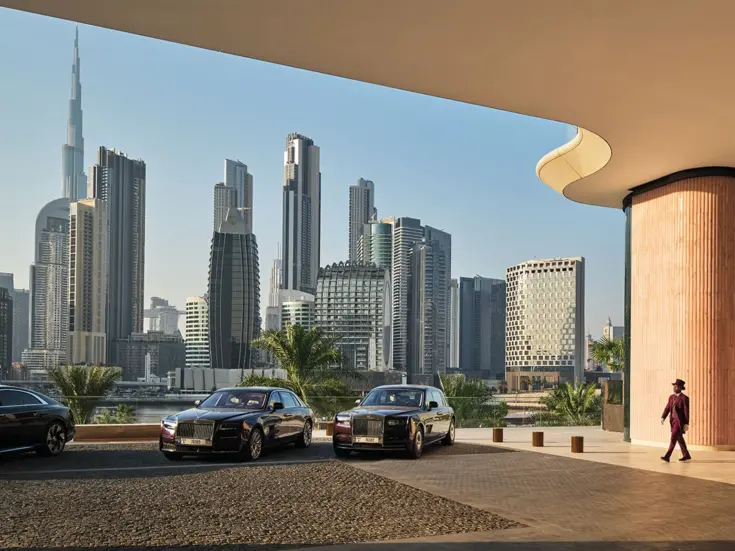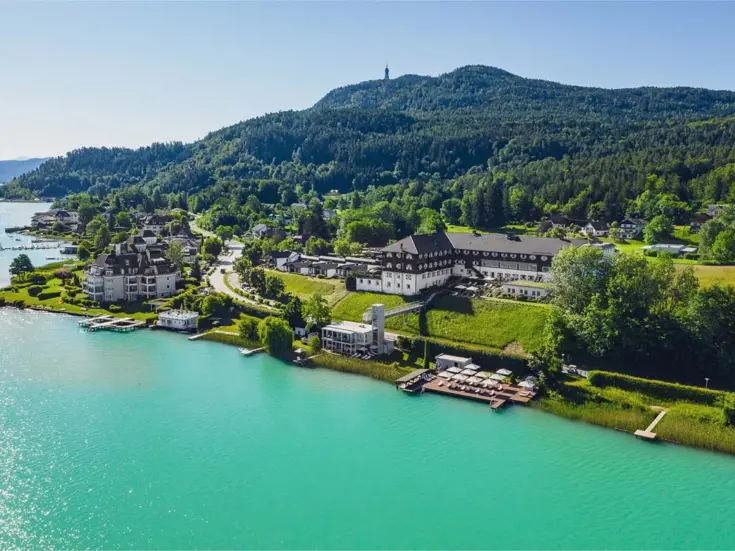John Underwood visits Marina Port Vell, where British investment has transformed a run-down expanse of harbour into the Med’s latest superyacht haven
Marina Port Vell, Barcelona’s new superyacht marina, embodies a very pleasant paradox: it was built to accommodate yachts up to 190 metres in length, although no such vessels yet exist. This, to be clear, is somewhere that boasts the infrastructure required for a currently theoretical degree of opulence. It’s like rebuilding your garage with a retractable roof, for your flying car.
Marina Port Vell is in many ways a project with its face to the future. Unlike countless similar developments, it’s nestled in the very centre of the city rather than tacked onto a shipyard or hidden a few miles down the seafront ’ you could quite easily be moored a five-minute walk from local restaurants, and the impossibly picturesque Gothic Quarter looks straight onto the harbour.
Although some berths are incomplete, even the empty stretches of quayside already have attached regeneration plans, with everything from a host of nautical businesses to a brand new fishing village due to appear over the next few years. And with 4km of mooring space already available, there’s unlikely to be an occupancy issue any time soon ’ even if you can produce a vessel that’s 10 metres longer than the current world record holder.
For Salamanca, the British investment and risk management firm behind the development of MPV, getting this far has been a labour of love. Salamanca took control of the site in 2010 via its subsidiary OneOcean, but faced immediate and fierce opposition to its plans to develop the 18-year-old marina (built for the 1992 Olympics). Locals imagined that visiting billionaires would require a huge Selfish Giant-style wall to be built around the marina, and confidently forecasted the death of the local economy.
No wall has so far been constructed, but Salamanca could soon be facing another challenge in the shape of Barcelona’s new mayor Ada Colau, a former housing reform activist who took office four days before I arrived in the city. Her official stance on superyachts has yet to be clarified, but nobody seems to expect the mayor to expose an unexpected weakness for luxury sailing.
MPV’s general manager Paul Cook is an upbeat Englishman who, like me, first took to the water in the rather less flashy surroundings of the Solent. He’s crossing his fingers that the mayor will judge the marina by its financial contribution rather than going down the eat-the-rich route. ‘We believe that the marina will generate for the local economy three quarters of a billion euros’ worth of business this year.’
It’s a rough estimate, but one that makes sense. Every yacht, per Cook’s argument, requires a pilot to guide it in, marineros to tie it up and receptionists to register its arrival. Every yacht takes on fuel, electricity and water from local suppliers. Every crew member, typically earning a few thousand euros per month with all expenses paid, will have money to spend. ‘They’ll have guests flying in… they’ll use Vueling, Easyjet. They’ll use taxis to get here, Seat taxis ’ Seat happen to be built in Barcelona.’ The prospect of arriving for a stint on a superyacht via Easyjet and a Seat taxi may not seem especially harmonious, but life can’t all be luxury.

That said, Marina Port Vell doesn’t do badly. The latest addition to the complex is the OneOcean Club, a harbourside members’ club that opened earlier this year and seems to have made a solid impression on the locals ’ when we visited for dinner, at least half of our fellow revellers were unfrosted by sea spray and devoid of deck shoes.
With temporary membership a formality, OneOcean has become an extremely popular night spot. Two outside bars produce a dazzling variety of cocktails to order (I didn’t see a menu; having listed a few favourite drinks, I was presented with a rosemary-scented Negroni), while the restaurant straddles a covered area and a patio of sorts, with glass walls ready to enclose the inner sanctum.
Sitting just within this barrier ’ the breeze, inoffensive enough to British skins, was nevertheless chilling the Spaniards ’ we ate a simple and beautifully prepared meal that drew on the abundant seafood and vegetables of the region. Seared scallops with slivers of pear showed off the outstanding quality of the local catch, while a thick, powerfully umami stew of rice and legumes was no doubt the sort of dish that’s fuelled two thousand years’ worth of Catalan fishermen.
The highlight of the meal, however, was our first course: a bowl containing a single slice of leek, decorated with a small heap of something that glistened in the low light but was otherwise unidentifiable. After allowing us a few seconds of speculation, the waiters drowned each tiny pile with a thick and glossy cold leek soup. On delving into the bowl, the mystery ingredient revealed itself to be sea urchin roe, now well-distributed and waiting to burst fragrantly in every mouthful.
The mystery of the decorated leek resolved, we retreated to the Hotel Majestic, whose palatial rooms overlook the Passeig de Gr’cia. The Majestic is a popular choice for visitors to the marina (those, at least, who like the occasional night on dry land), and it makes the most of its storied location on Barcelona’s Bond Street. The tenth-floor bar and sundeck must offer the city’s best view ’ and I can testify to the tastiness of the couture-inspired high tea, even if I didn’t correctly recognise the Jimmy Choo- or Balenciaga-themed ’clairs.
Having resisted the allure of a midnight rooftop DJ set in favour of our beds, we returned to Marina Port Vell for the promised ‘marina tour’ ’ a tour which, happily, took the form of a speedboat ride rather than a stroll along the jetties. It’s only from the water that you can really get a sense of how completely Barcelona’s marinas reach into the heart of the city. Rushing past the commercial shipyards to reach the statue of Columbus standing at the foot of La Rambla, lapping almost against the walls of the looming Museu d’Hist’ria de Catalunya, the water is everywhere.

Marina Port Vell makes no attempt to blend into the port district’s background of sun-bleached tenements; its striking Gallery building, home to first-class crew facilities and a range of nautically-minded companies as well as the marina’s admin team, was repeatedly described to me as ‘Googlesque’. But it’s hard to see the unabashed newness of the development as a bad thing. Barcelona’s most famous structures are, almost without exception, the outrageous Modernist confections of Antoni Gaud’ ’ the skeletal Casa Batll’, visible from my window at the Majestic, is much more of an assault on the senses.
For Martin Bellamy, CEO of Salamanca and OneOcean, any opposition to the marina is likely to be short-lived. ‘There are a lot of people with different vested interests around here… If you peel back the layers, there are probably ten people in Barcelona who really want to have a go at this project. There’s a blogger… a couple of politicians.’ He echoes Cook’s conviction that the superyachts can only mean more steady income for one of the poorer districts of a city battling high unemployment. ‘These boats… people get off them and spend money. When we bought this marina, most of the boats in it couldn’t afford the marina fees.’
A former rifle officer, Bellamy may draw his insouciance from an eventful background in Bosnia and Northern Ireland. However, it could also be fuelled by the fact that he’s taking on much bigger projects these days. With MPV fully operational and close to completion, Bellamy has been exploring a potential OneOcean marina opportunity in another Spanish-speaking city ’ one that was among the great yachting destinations until some 60 years ago. Further details are currently classified, but the city ’ the capital, let’s say, of an island that rhymes with ‘tuba’ ’ could well be attracting headlines in the near future.
Our 26 hours in Barcelona nearly exhausted, we stood on the roof of the Gallery and watched a superyacht revolve on the spot. On our whistle-stop tour of the harbour we’d seen the most extraordinary variety of life out on the water. The tender passed a gnarled local standing perfectly still on a bucking surfboard, a sailing boat crewed by local preteens learning water safety, a cargo ship the size of a tower block and a gleaming black superyacht that’s home to one especially nautical barcelon’. One huge vessel was out of the water in a cavernous 200-metre dry dock; another had been entirely enclosed in a tent so it could be painted. It might have a couple more floating billionaires and not quite so many fishermen as it did a century ago, but this is a port that’s as bound up with the city around it as ever.








